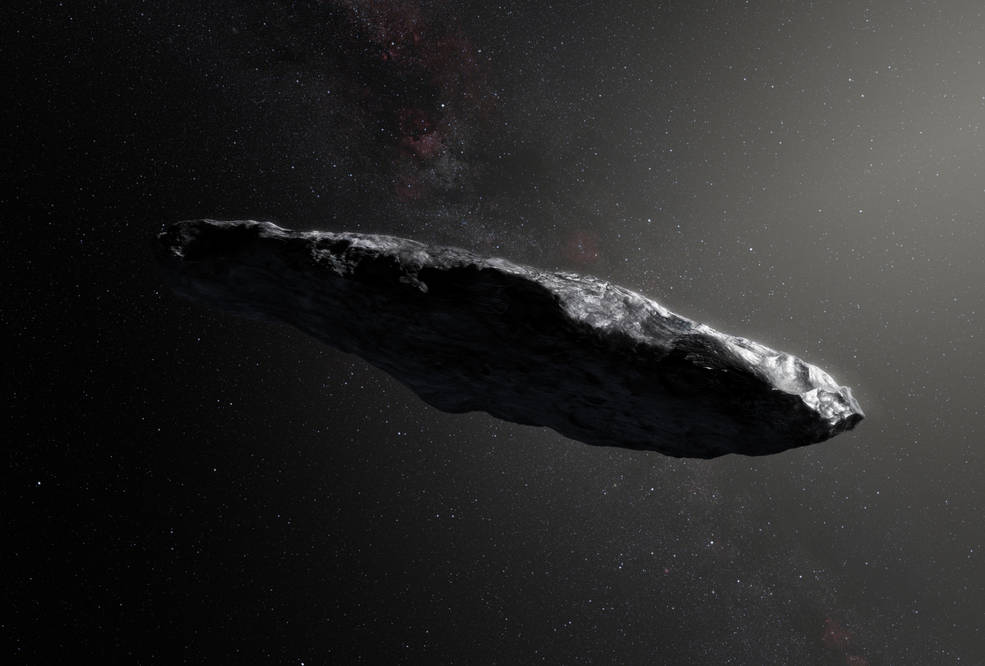
This artist’s impression shows the first interstellar asteroid, Oumuamua. Source
This is a follow-up piece on earlier TQR articles about Asteroid Detection. In this edition, we are featuring a number of citizen science projects and other initiatives that aim to promote a love for science among youth. This article features Asteroid Day, an initiative of the B612 Foundation, and how kids are becoming involved in the field of Planetary Defense. But, first, check out brief summaries of earlier publications:
In Asteroid detection: Will an asteroid soon hit Earth? Short answer is, “probably”, we talked about the asteroid airburst over the Tunguska River in Russia in 1908, flattening a forest area of 2,150 square kilometres. Since then, scientists and governments have been monitoring Earth’s atmosphere for asteroids that could pose a threat to our planet. In recent years, there have been several close calls, including an asteroid that passed within 16,000 miles of Earth in 2021. While these events are rare, they are a reminder that we need to be prepared for the possibility of an asteroid impact.
In Asteroid Detection Systems and The Science of Planetary Defence, we discussed how there are a number of different planetary defense strategies, including deflection, disruption, and impact avoidance, and how there are a number of different asteroid detection systems in use today, with optical telescopes, radars, gravitational wave detectors and more. We’ve also shown how recent advances in asteroid detection and planetary defense have made it possible to detect smaller and slower asteroids and develop new strategies for deflecting and disrupting asteroids.
By Mariana Meneses
Planetary defense is the science of protecting the Earth from asteroids and comets that could pose a threat to our planet.
Mapping has played a crucial role in pushing the boundaries of exploration throughout human history, and this holds true for our understanding of the solar system. As we delve into the complexities of celestial bodies, we realize that the solar system transcends the confines of three dimensions, as it encompasses the dimension of time. With the realization that the solar system is in a constant state of flux, it becomes imperative to chart its intricate dynamics in all four dimensions. That was the reasoning behind the Charting the High Frontier of Space.
Charting the High Frontier of Space is a project led by Dr. Ed Lu, a three-time NASA astronaut who is Executive Director of the Asteroid Institute, a program of the B612 Foundation, to create a four-dimensional map of the solar system.
The map will track the motion of asteroids and other objects in space over time, so that we can better understand the potential for collisions with Earth. The map will also be used to support future scientific exploration and commercial activities in space.
The project is funded by the Asteroid Institute, which is an initiative of B612 Foundation that partners with major academic and research institutions around the world to promote asteroid-related science, technology, education, and research. The Asteroid Institute is working with a team of scientists and engineers from around the world to develop the map by using a variety of data sources, including data from ground-based telescopes, space telescopes, and spacecraft. The data will be processed using a variety of algorithms to track the motion of objects in space.
The map will be made available to the public for free. It will be a valuable resource for scientists, engineers, and policymakers who are working to protect Earth from asteroid impacts and to explore and utilize space. Here are some of the benefits of Charting the High Frontier of Space:
- Improved asteroid impact risk assessment: The map will help us to better understand the potential for asteroids to collide with Earth. This information can be used to develop strategies for protecting Earth from asteroid impacts.
- Increased scientific knowledge: The map will provide a wealth of information about the solar system. This information can be used to advance our understanding of the solar system and its origins.
- Stimulated economic development: The map will help to spur economic development in space industries. This could lead to new jobs, new businesses, and new technologies.
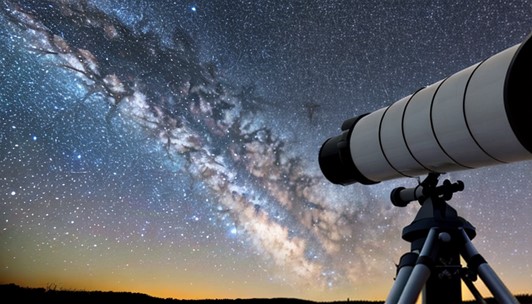
Mapping the evolution of the solar system requires observations of changes over time in its many structures. Image generated using Getimg.Ai.
Mapping the solar system in four-dimensions may help us deal with the vast number of asteroids hitting our planet, from different and regular coordinates of space-time.
The matter is so important that the B612 Foundation created the Asteroid Day, a UN-sanctioned global awareness campaign that is celebrated annually on June 30 and July 1. Asteroid Day aims to educate the public on asteroids and space, highlighting the importance and consequences of space to life on Earth. The events are open to the public, hosted in Luxembourg, and live-streamed on Asteroid Day’s digital platforms.
B612 Foundation is a partner in Asteroid Day. B612 is an organization that works to protect Earth from asteroid impacts, and to inform decision-making on planetary defense issues. B612 provides a non-governmental voice on the risks, options, and implications of asteroid data. Ed Lu and former astronaut Rusty Schweickart have been educating and advocating for the world to pay attention to the risks of an asteroid impact for more than 15 years. That is greater than the age of young Arushi Nath, who appears to way ahead of her time in contributing to planetary defense.
Youth Contribute to Planetary Defense Initiatives
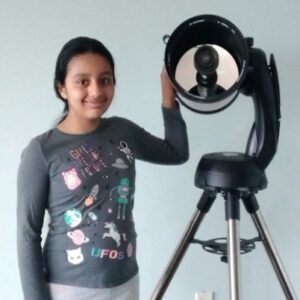
Young scientist Arushi Nath, whose project was selected for headline presentation at the 2023 Planetary Defense Conference in Vienna
Arushi is a Grade 8 student from Toronto, Canada, who is passionate about solving space-related problems using open data and algorithms. Her project strengthens planetary defense by identifying and studying unknown asteroids with robotic telescopes, math, and the Python programming language. Arushi’s achievements include winning top award for innovation at the 2023 Canada-Wide Science Fair and the NASA SpaceApps Covid-19 Challenge. She has also built robots, battlebots, rockets, and rovers, and has participated in over 50 hackathons, earning national and international recognition.
Arushi is co-founder of HotPopRobot, an enterprise co-founded in 2014 that encourages families and youth to undertake practical projects on space, robotics, coding, and science. HotPopRobot has won a number of awards, and the enterprise is also involved in several outreach events every year through NASA and Canadian Space Apps Challenges, and the Ontario Science Centre, among others.
Arushi presented her citizen science project focusing on using robotic telescopes and open data to characterize Near-Earth Objects (NEOs) and assess the impact of the NASA DART Mission at the 8th Planetary Defense Conference (PDC). The PDC is a biennial event that brings together global experts to discuss the threats posed by asteroids and comets to Earth and explore defense measures, and was most recently held at the Vienna International Centre and the Austrian Academy of Sciences, from 3-7 April 2023.
Arushi’s abstract for the presentation highlights the catastrophic potential of asteroid collisions, citing the successful DART mission that demonstrated planetary defense capabilities by changing the orbit of an asteroid on September 26, 2022.
To measure changes in the orbit of the asteroid Didymos after it was deflected by the DART probe, the author conducted a citizen science project based on open science principles. She submitted observation proposals to multiple organizations, leveraging Python programming and open datasets for data analysis, including brightness measurements and light curve generation. This comprehensive analysis yielded insights into rotation period, orbital period, brightness increase, and post-impact tail length. The project’s overarching goal was to inspire young individuals by sharing open data and code, while webinars and collaborations further stimulated enthusiasm for creative problem-solving.
The Quantum Record spoke with Arushi and asked her about her experience presenting at the Planetary Defense Conference.
She said that she has invested over 1600 hours in the past two years working on planetary defense, and was excited when her project was accepted for headline presentation at the 2023 Planetary Defense Conference in Vienna.
She told us,
“It was wonderful that a Grade 8, middle school student could be a part of such a dedicated global community working on this unique issue of planetary defense to protect humanity against asteroids. I learned about asteroid deflection missions by NASA, European Space Agency, Japan, and China. Everyone was wonderful and was happy to share their research findings and future goals with me. The best part for me was to meet in person several scientists from the NASA DART mission whose talks I had heard online or exchanged emails with. It shows that science is a goal worth pursuing, as there could be no better reward than solving hard problems for the benefit of all humanity.”
The conference featured a variety of presentations, workshops, and discussions on a wide range of topics related to planetary defense, including the characterization of Near-Earth Objects (NEOs), the development of methods for deflecting asteroids, and the roles of international cooperation and public engagement in planetary defense.
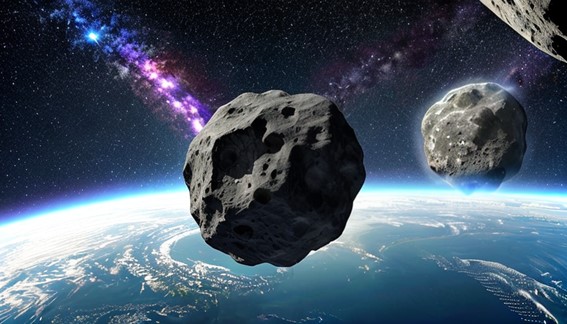
Simulation of asteroids orbiting Earth. Image generated using Getimg.Ai.
We asked Arushi what advice she would give to other young people who are interested in getting involved in science.
Here are her words:
“Curiosity is the starting point for science. Science starts to happen when you pursue your curiosity with the skills you have, be it math, programming, or undertaking experiments. I suggest young people try project-based learning, where they invest their attention in solving one problem in-depth at a time. The problem should be suitably difficult to frustrate you but not hard enough that you give it up. Make the journey fun by involving others, learning from others, joining online communities, and attending talks and lectures online and in your local museums and universities. When you become a part of a wider community, the journey becomes more exciting as you learn new things and you have avenues to seek help and advice.”
Check out another TQR article, where we featured a number of citizen science projects.
Craving more information? Take a look at these recommended TQR articles:
- Asteroid Detection Systems and The Science of Planetary Defence
- NASA’s Artemis Mission: Could We Have a Moon Base by 2030?
- Solar Flares and CMEs: Are (Millions of) Nuclear Bombs Threatening Our Technology?
- “Space Hurricanes” Discovered in the Upper Atmosphere

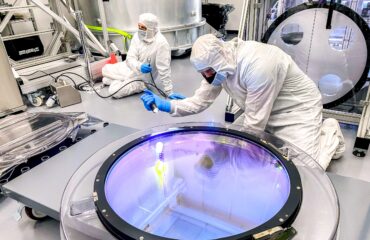
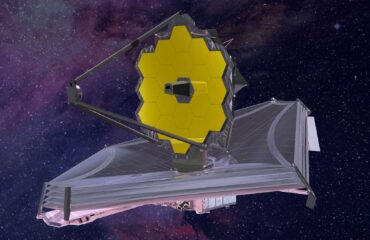

Thank you. Enjoyed reading the article focusing on using science and technology for planetary defense. Many of the ongoing and (re)emerging challenges are intergenerational, including climate change, pandemics, biodiversity loss, and growing space debris. This means we need to encourage ways to attract the attention of youths to these challenges. One way is through promoting open science, open communities, hackathons and citizen science that encourage youths to use technology for the public good.
My project on planetary defense (developing algorithms to determine the physical properties of near-earth asteroids) featured in the article was initiated by my curiosity but was driven by access to open science and data.